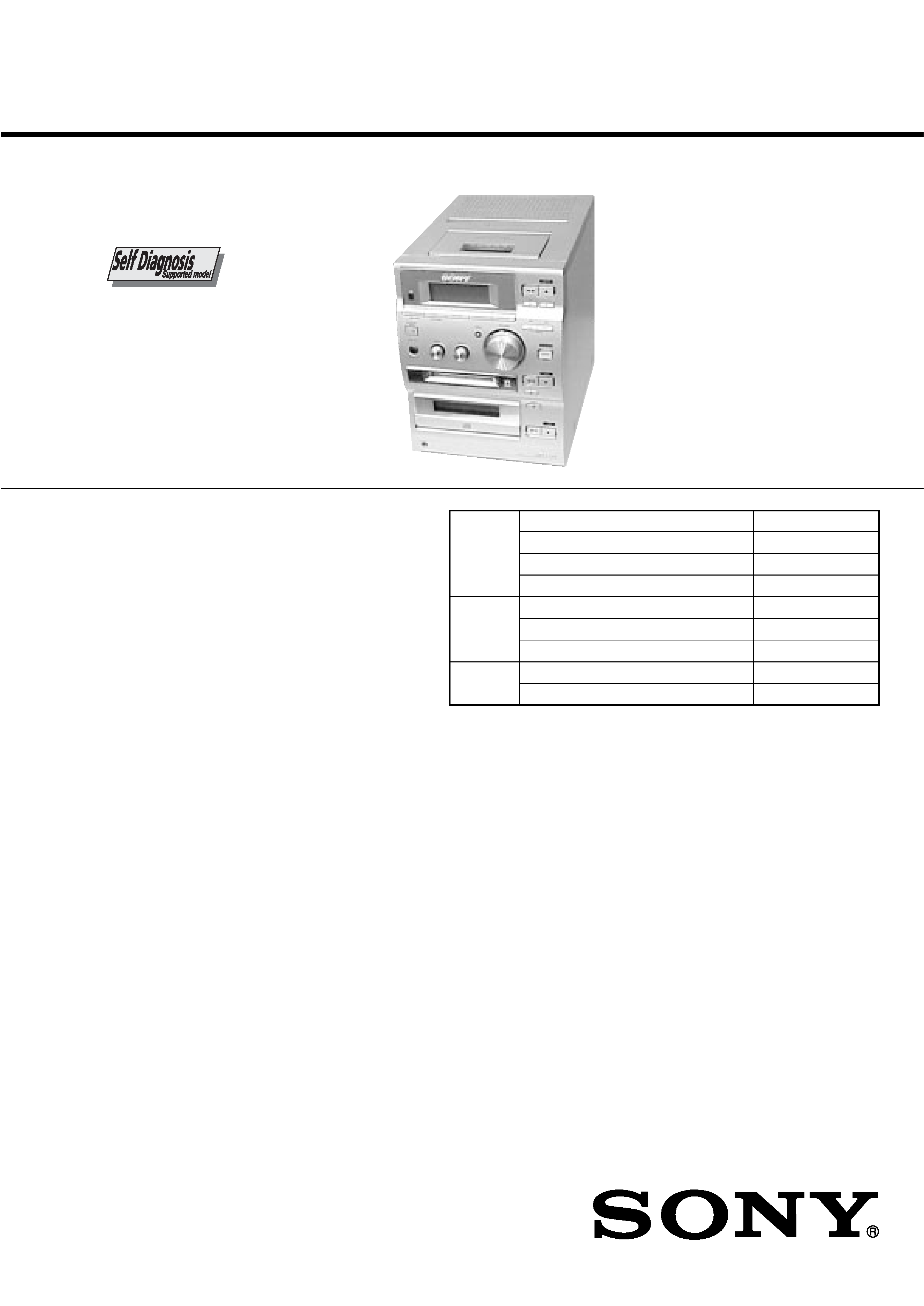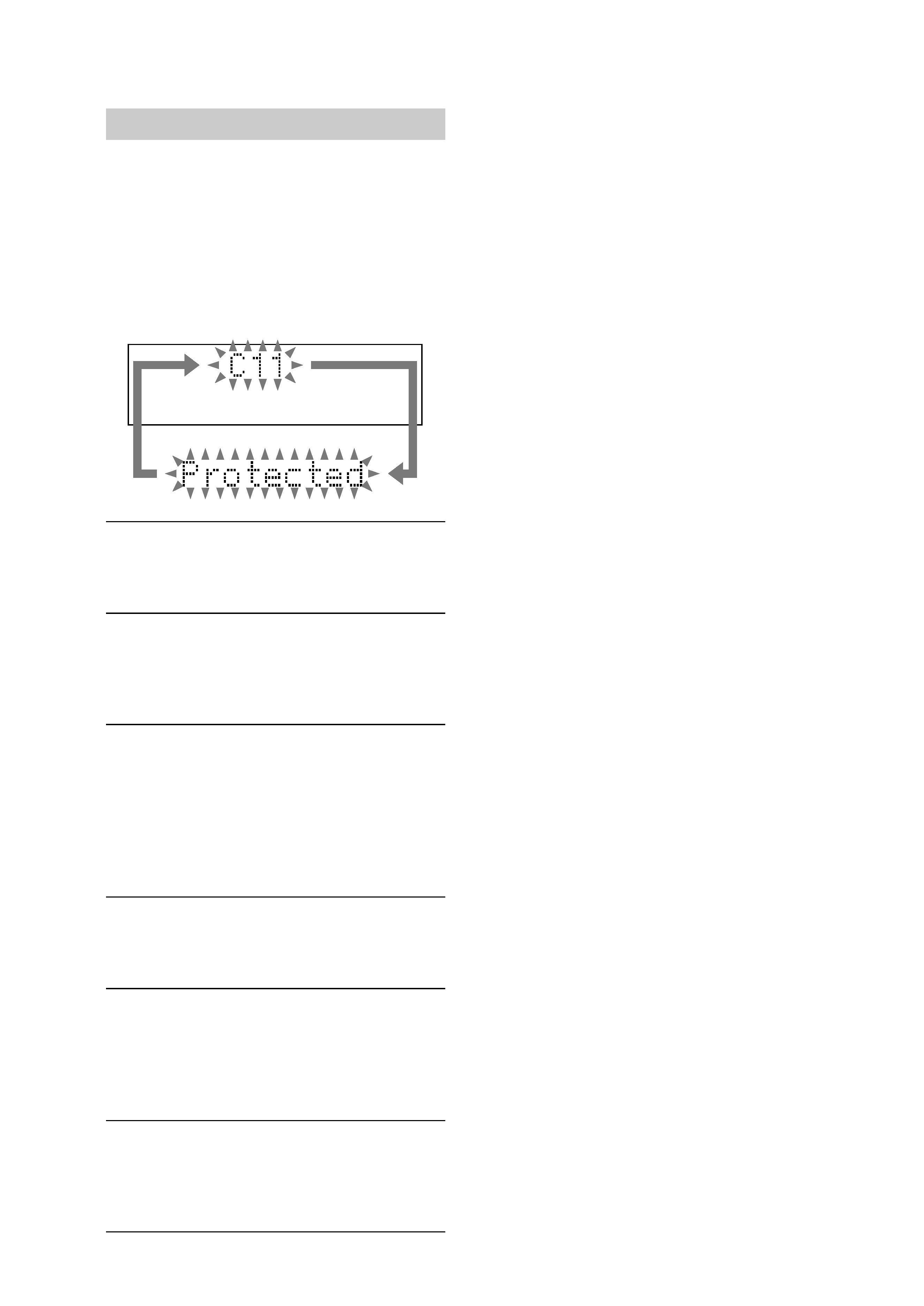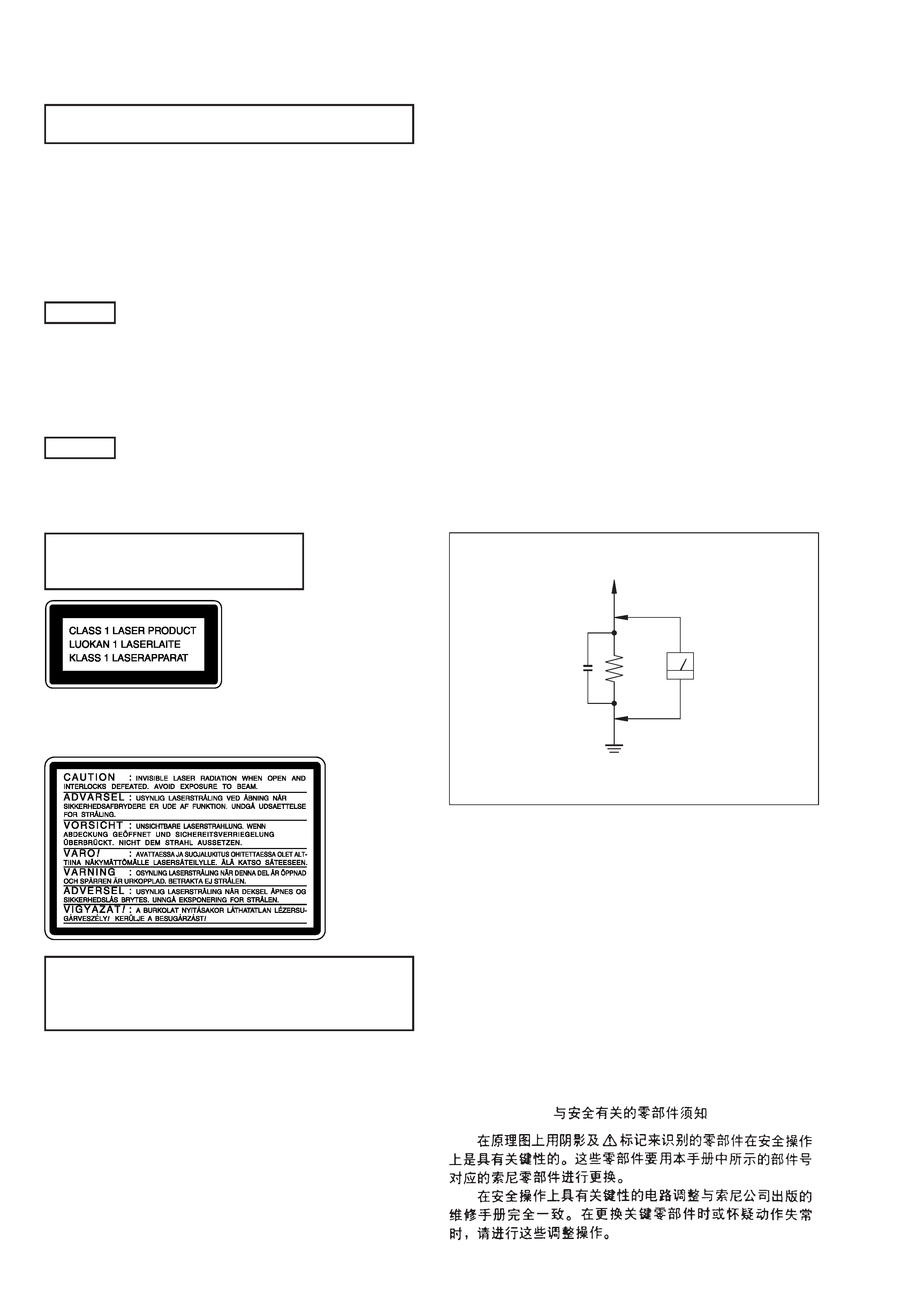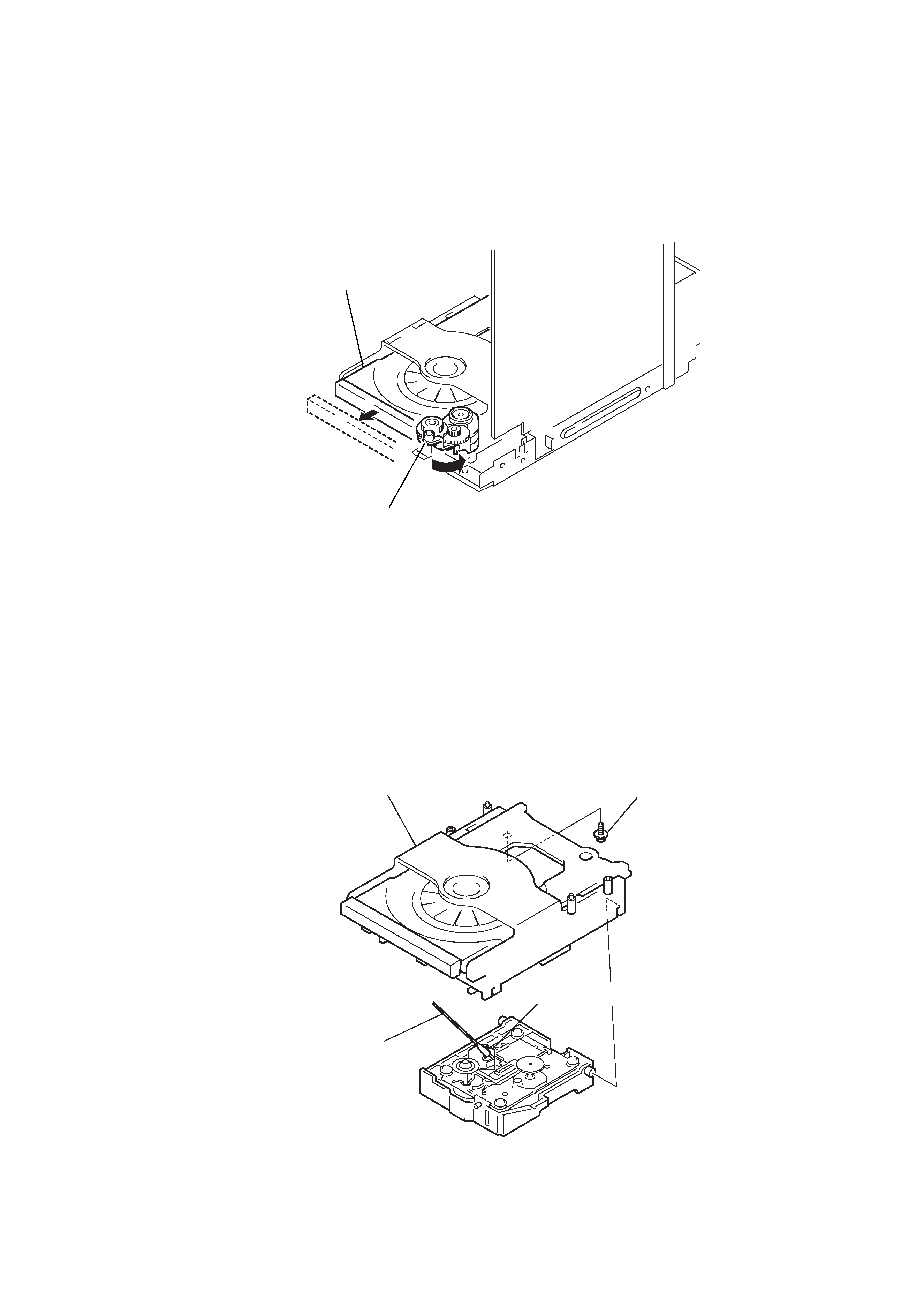
SERVICE MANUAL
MICRO HI-FI COMPONENT SYSTEM
Sony Corporation
Personal Audio Group
Published by Sony Engineering Corporation
HCD-CP500K/CP500MD
US Model
Canadian Model
AEP Model
UK Model
E Model
Australian Model
Chinese Model
HCD-CP500MD
Korea Model
HCD-CP500K
-- Continued on next page --
SPECIFICATIONS
HCD-CP500K/CP500MD is the Amplifier,
MD deck, CD player, Tape player and Tuner
section in CMT-CP500K/CP500MD.
Model Name Using Similar Mechanism
New
CD Mechanism Type
CDM55F-K4BD43
Base Unit Type
BU-K4BD43
Optical Pick-up Type
KSM-213DHAP
Model Name Using Similar Mechanism
New
MD Mechanism Type
MDM-7B
Optical Pick-up Type
KMS-260B
Model Name Using Similar Mechanism
New
Tape Transport Mechanism Type
Mech deck
CD
Section
MD
Section
Tape deck
Section
9-873-216-03
2005B16-1
© 2005.02
Ver. 1.2 2005. 02
Amplifier section
For the U.S. model
AUDIO POWER SPECIFICATIONS
POWER OUTPUT AND TOTAL
HARMONIC DISTORTION:
With 6-ohm loads, both channels driven, from
70 - 20,000 Hz; rated 18 watts per channel
minimum RMS power, with no more than 0.9%
total harmonic distortion from 250 milliwatts to
rated output.
US, Canadian model:
Continuous RMS power output (reference):
35 + 35 W
(6 ohms at 1 kHz, 10%
THD)
Total harmonic distortion: less than 0.07% (6 ohms at
1 kHz, 18 W)
AEP, UK model:
DIN power output (rated): 30 + 30 W
(6 ohms at 1 kHz, DIN)
Continuous RMS power output (reference):
35 + 35 W
(6 ohms at 1 kHz, 10%
THD)
Music power output (reference):
85 + 85 W
Other models:
The following measured at 230 V AC, 60 Hz
DIN power output (rated): 30 + 30 W
(6 ohms at 1 kHz, DIN)
Continuous RMS power output (reference):
35 + 35 W
(6 ohms at 1 kHz, 10%
THD)
The following measured at 220 V AC, 60 Hz
DIN power output (rated): 24 + 24 W
(6 ohms at 1 kHz, DIN)
Continuous RMS power output (reference):
27 + 27 W
(6 ohms at 1 kHz, 10%
THD)

2
HCD-CP500K/CP500MD
Specifications (continued)
Inputs
ANALOG IN (phono jacks):
Sensitivity 250 mV,
impedance 47 kilohms
DIGITAL OPTICAL IN (Supported sampling
frequencies: 32 kHz, 44.1 kHz and 48 kHz)
Outputs
PHONES (stereo minijack):
Accepts headphones with
an impedance of 8 ohms
or more
SPEAKER:
Accepts impedance of 6 to
16 ohms
CD player section
System
Compact disc and digital
audio system
Laser
Semiconductor laser
(
= 780 nm)
Emission
duration: continuous
Wavelength
780 790 nm
Frequency response
2 Hz 20 kHz (
±0.5 dB)
Tape player section
Recording system
4-track 2-channel stereo
Frequency response
50 13,000 Hz (
±3 dB),
using a Sony TYPE I
cassette
Wow and flutter
±0.15% W. Peak (IEC)
0.1% W. RMS (NAB)
±0.2% W. Peak (DIN)
MD deck section
System
MiniDisc digital audio
system
Laser
Semiconductor laser
(
=780 nm)
Emission duration:
continuous
Sampling frequency
44.1 kHz
Frequency response
5 Hz 20 kHz
Tuner section
FM stereo, FM/AM superheterodyne tuner
FM tuner section
Tuning range
US and Canadian model:
87.5 108.0 MHz
(100-kHz step)
Other models:
87.5 108.0 MHz
(50-kHz step)
Antenna
FM wire antenna
Antenna terminals
75 ohm unbalanced
Intermediate frequency
10.7 MHz
AM tuner section
Tuning range
US and Canadian model:
530 1,710 kHz
(with the tuning interval
set at 10 kHz)
531 1,710 kHz
(with the tuning interval
set at 9 kHz)
AEP and UK model:
531 1,602 kHz
(with the tuning interval
set at 9 kHz)
Other models:
530 1,710 kHz
(with the tuning interval
set at 10 kHz)
531 1,602 kHz
(with the tuning interval
set at 9 kHz)
Antenna
AM loop antenna, external
antenna terminal
Intermediate frequency
450 kHz
General
Power requirements
US and Canadian model:
120 V AC, 60 Hz
AEP and UK model:
230 V AC, 50/60 Hz
Australian and Hong Kong model:
220 240 V AC,
50/60 Hz
Other models:
110 120 V or 220
240 V AC , 50/60 Hz
Adjustable with voltage
selector
Power consumption
AEP and UK model:
See the nameplate
0.5 W (in the standby
mode)
Other models:
See the nameplate
Dimensions (w/h/d)
Approx. 190
× 252 ×
335 mm incl. projecting
parts and controls
Mass
Approx. 7.0 kg
Supplied accessories
Remote commander (1)
AM loop antenna (1)
FM wire antenna (1)
Batteries (2)
Design and specifications are subject to change
without notice.
Thai and Chinese model:
220 V AC, 50/60 Hz

3
HCD-CP500K/CP500MD
Self-diagnosis display
This system has a Self-diagnosis display
function to let you know if there is a system
malfunction. The display shows a code made
up of three letters and a message alternately to
show you the problem. To solve the problem
refer to the following list. If any problem
persists, consult your nearest Sony dealer.
C11/Protected
The MD is protected against erasure.
Remove the MD and slide the tab to close the
slot (see page 16).
C12/Cannot Copy
You tried to record a CD or MD with a format that
the system does not support, such as a CD-ROM.
p Remove the disc and turn off the system once,
then turn it on again.
C13/REC Error
Recording could not be performed properly.
p Move the system to a stable place, and start
recording over from the beginning.
The MD is dirty or scratched, or the MD does not
meet the standards.
p Replace the MD and start recording over from
the beginning.
C13/Read Error
The MD deck cannot read the disc information
properly.
p Remove the MD once, then load it again.
C14/Toc Error
The MD deck cannot read the disc information
properly.
p Replace the MD.
p Erase all the recorded contents of the MD using
All Erase Function (see page 27).
C41/Cannot Copy
The sound source is a copy of commercially
available music software.
p The Serial Copy Management System prevents
making a digital copy (see page 47).
1. SERVICING NOTES ······················································ 4
2. GENERAL ·········································································· 9
3. DISASSEMBLY ······························································ 11
4. TEST MODE ··································································· 20
5. MECHANICAL ADJUSTMENTS ···························· 26
6. ELECTRICAL ADJUSTMENTS ······························ 26
7. DIAGRAMS
7-1. CIRCUIT BOARDS LOCATIONS ··································· 41
7-2. BLOCK DIAGRAM CD SECTION ··························· 42
BLOCK DIAGRAM MAIN SECTION ······················ 43
BLOCK DIAGRAM MD SECTION ·························· 44
BLOCK DIAGRAM PANEL SECTION ···················· 45
7-3. PRINTED WIRING BOARD CD BOARD ················ 46
7-4. SCHEMATIC DIAGRAM CD BOARD ····················· 47
7-5. PRINTED WIRING BOARD BD BOARD ················ 48
7-6. SCHEMATIC DIAGRAM BD BOARD (1/2) ············ 49
7-7. SCHEMATIC DIAGRAM BD BOARD (2/2) ············ 50
7-8. PRINTED WIRING BOARDS AUDIO SECTION ···· 51
7-9. SCHEMATIC DIAGRAM AUDIO SECTION (1/2) ··· 52
7-10. SCHEMATIC DIAGRAM AUDIO SECTION (2/2) ··· 53
7-11. PRINTED WIRING BOARD TC BOARD ················· 54
7-12. SCHEMATIC DIAGRAM TC BOARD ······················ 55
7-13. PRINTED WIRING BOARD DIGITAL BOARD ······ 56
7-14 SCHEMATIC DIAGRAM DIGITAL BOARD ··········· 57
7-15. PRINTED WIRING BOARDS CONTROL SECTION ··· 58
7-16 SCHEMATIC DIAGRAM CONTROL BOARD ········ 59
7-17. PRINTED WIRING BOARD POWER BOARD ········ 60
7-18. SCHEMATIC DIAGRAM POWER BOARD ············· 60
7-19. IC BLOCK DIAGRAMS ·················································· 61
7-20. IC Pin Function Description ·············································· 63
8. EXPLODED VIEWS ····················································· 71
9. ELECTRICAL PARTS LIST ····································· 78
TABLE OF CONTENTS

4
HCD-CP500K/CP500MD
SECTION 1
SERVICING NOTE
This appliance is classified as a CLASS 1 LASER product. The
CLASS 1 LASER PRODUCT MARKING is located on the rear
exterior.
Laser component in this product is capable
of emitting radiation exceeding the limit for
Class 1.
CAUTION
Use of controls or adjustments or performance of procedures
other than those specified herein may result in hazardous radiation
exposure.
Notes on chip component replacement
· Never reuse a disconnected chip component.
· Notice that the minus side of a tantalum capacitor may be
damaged by heat.
Flexible Circuit Board Repairing
· Keep the temperature of soldering iron around 270°C
during repairing.
· Do not touch the soldering iron on the same conductor of the
circuit board (within 3 times).
· Be careful not to apply force on the conductor when soldering
or unsoldering.
NOTES ON HANDLING THE OPTICAL PICK-UP
BLOCK OR BASE UNIT
The laser diode in the optical pick-up block may suffer electrostatic
break-down because of the potential difference generated by the
charged electrostatic load, etc. on clothing and the human body.
During repair, pay attention to electrostatic break-down and also
use the procedure in the printed matter which is included in the
repair parts.
The flexible board is easily damaged and should be handled with
care.
FOR CD
NOTES ON LASER DIODE EMISSION CHECK
The laser beam on this model is concentrated so as to be focused on
the disc reflective surface by the objective lens in the optical pick-
up block. Therefore, when checking the laser diode emission,
observe from more than 30 cm away from the objective lens.
FOR MD
NOTES ON LASER DIODE EMISSION CHECK
Never look into the laser diode emission from right above when
checking it for adjustment. It is feared that you will lose your sight.
This caution
label is
located inside
the unit.
SAFETY CHECK-OUT
After correcting the original service problem, perform the following
safety check before releasing the set to the customer:
Check the antenna terminals, metal trim, "metallized" knobs, screws,
and all other exposed metal parts for AC leakage.
Check leakage as described below.
LEAKAGE TEST
The AC leakage from any exposed metal part to earth ground and
from all exposed metal parts to any exposed metal part having a
return to chassis, must not exceed 0.5 mA (500 microamperes.).
Leakage current can be measured by any one of three methods.
1. A commercial leakage tester, such as the Simpson 229 or RCA
WT-540A. Follow the manufacturers' instructions to use these
instruments.
2. A battery-operated AC milliammeter. The Data Precision 245
digital multimeter is suitable for this job.
3. Measuring the voltage drop across a resistor by means of a VOM
or battery-operated AC voltmeter. The "limit" indication is 0.75
V, so analog meters must have an accurate low-voltage scale.
The Simpson 250 and Sanwa SH-63Trd are examples of a
passive VOM that is suitable. Nearly all battery operated digital
multimeters that have a 2 V AC range are suitable. (See Fig. A)
To Exposed Metal
Parts on Set
0.15
µF
1.5 k
AC
Voltmeter
(0.75 V)
Earth Ground
Fig. A. Using an AC voltmeter to check AC leakage.
SAFETY-RELATED COMPONENT WARNING!!
COMPONENTS IDENTIFIED BY MARK 0 OR DOTTED LINE WITH
MARK 0 ON THE SCHEMATIC DIAGRAMS AND IN THE PARTS
LIST ARE CRITICAL TO SAFE OPERATION. REPLACE THESE
COMPONENTS WITH SONY PARTS WHOSE PART NUMBERS
APPEAR AS SHOWN IN THIS MANUAL OR IN SUPPLEMENTS
PUBLISHED BY SONY.
ATTENTION AU COMPOSANT AYANT RAPPORT
À LA SÉCURITÉ!
LES COMPOSANTS IDENTIFÉS PAR UNE MARQUE 0 SUR LES
DIAGRAMMES SCHÉMATIQUES ET LA LISTE DES PIÈCES SONT
CRITIQUES POUR LA SÉCURITÉ DE FONCTIONNEMENT. NE
REMPLACER CES COMPOSANTS QUE PAR DES PIÈSES SONY
DONT LES NUMÉROS SONT DONNÉS DANS CE MANUEL OU
DANS LES SUPPÉMENTS PUBLIÉS PAR SONY.

5
HCD-CP500K/CP500MD
DRAWING OUT THE TRAY DURING POWER OUT
CLEANING THE OPTICAL PICK-UP (CD PLAYER)
Tray
Move the cam block in the direction
of the arrow with a finger.
CD mechanism deck
Optical pick-up block
Floating screw
Clean the lens block
with applicator.
